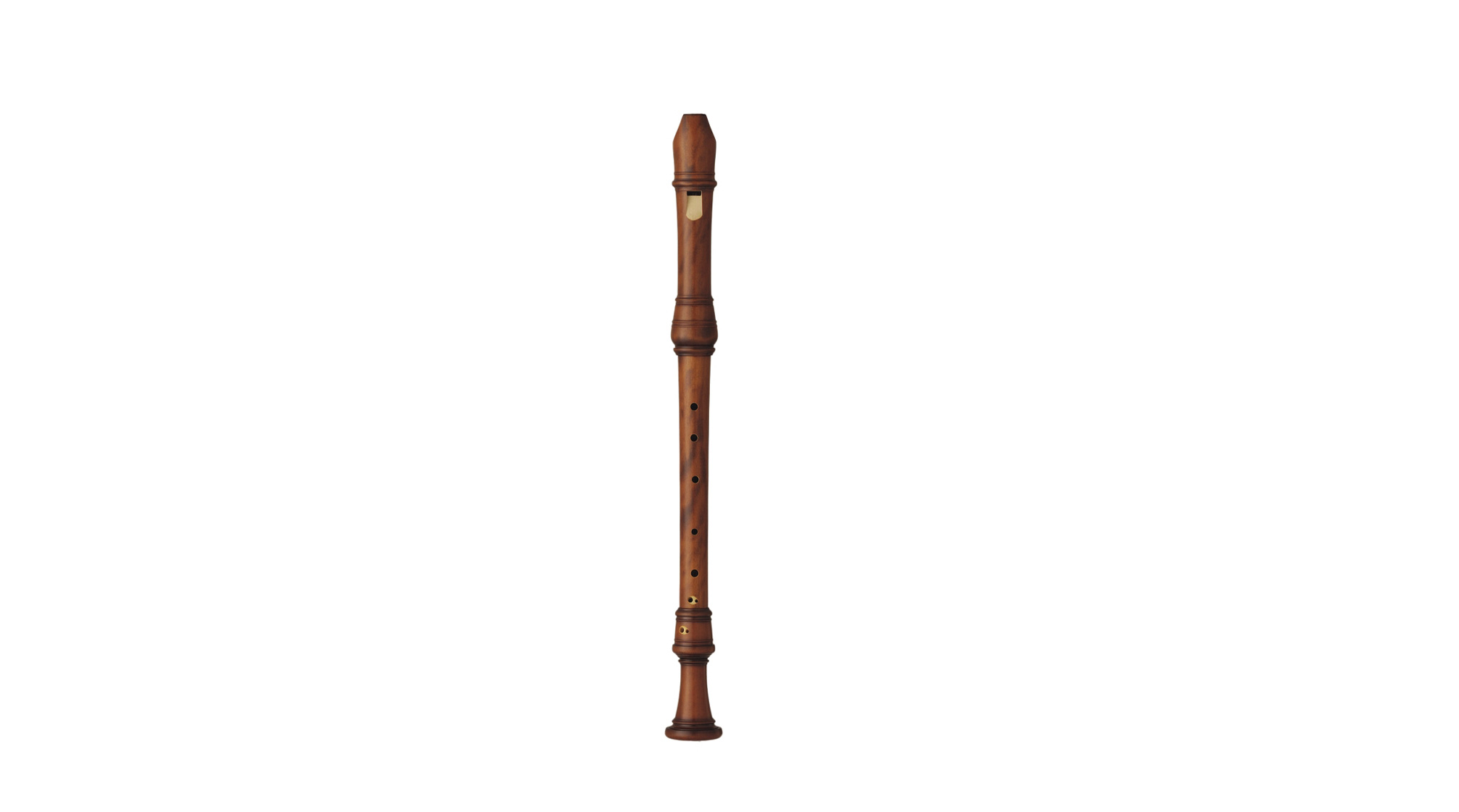Baroque Doublehole, Item: TV415BB-TAK Stained, 415 Hz
The Voice Flute recorder with the article number: TV415BB-TAK built by Takeyama is a musical tool, that in making music new can give fun.
This circumstance is due to the skillful combination of the marvelous model in fusion with the characteristics of the material Brazilian boxwood.
The bore
The geometry of the inner bore of the instrument is light cylindroconical. This kind of bore shape gives the instrument this characteristic sound.In principle, recorders with wider bore sound warmer, fuller, more fundamental and thus more suitable for ensembles than instruments with narrower inner bore.
For what styles can the recorder best be used for?
Brazilian boxwood is particularly for woodwinds used for: Focus on baroque music, other styles possible.To whom is this instrument addressed?
This means that recorders made of Brazilian boxwood are especially for Students, Professional Players suitable. A further valid rule is that a more instrument makes the learning in most cases enriching apparently low-cost offer.The windway of the recorder
The windway is the area in the head of the recorder where the blowing air is formed into a thin sheet of air. This air leaf is the basis of the sound of the recorder. In interaction with the labium, the air flow is very quickly alternately directed inwards and outwards. This swinging stream stimulates the air in the body of the instrument. This is the origin of the recorder tone. This is the reason why the labium must not be damaged in any case. The same applies to the windway. Otherwise suffer the variability of the available sound spectra of the instrument.
The windway of the instrument TV415BB-TAK of Takeyama has this windway shape: Curved, conical.Conical shaped windways accelerate breathing air more than cylindrical windways.
Never underestimate windway and labium! Their meaning for the recorder is very complex in their geometric shape. Damages here often lead to a total loss!
Fingerings
The model Takeyama TV415BB-TAK is manufactured in the version: Baroque Doublehole .
Construction
The number of components a woodwind instrument shapes extraordinarily the way the recorder in daily use on the one hand is simple to handle in terms of easy assembling and on the other hand for the safe transport.
This is a point that should not be underestimated, especially when transporting larger (and sometimes multiple) instruments.
{Experienced ensemble players can tell you a thing or two about this. Or ask members of recorder orchestras will agree.
Leaders of recorder orchestras know how useful good and compact recorder cases are.
Packaging and accessories
The recorder is delivered as standard with: BagThe following accessories included:
Notes on the way to new recorders
Ask acquaintances!The search for your new instrument should never be influenced by opinions prevailing in your environment.
Get your own realizations after playing an instrument. Don't let "generally valid" rules, such as "the flute xy doesn't work at all in an ensemble/for professionals.
Do not let others stop you from playing a unkown brand.
Your musical perception is as unique as you are.
Therefore, only you can decide which wind tunnel shape will personally to "make music endlessly".
Our recommendation is therefore: Test various brands!
After that you will be delighted and can make a confident decision.
Information about instruments with keys
Not always can the tone holes be drilled in the places in the body that are pleasant and easy to reach with the fingers. Especially with larger recorders sit for acoustic reasons some tone holes adequate to reach. On these instruments, by the instrument maker keys are added, which make gripping clearly easier, or possible in the first place.This allows it to be {pleasant|light|ergonomic|conspicuous|above average| good play even by players with smaller hands.
The instrument TV415BB-TAK has the following flaps:
| Bore shape: | light cylindroconical |
|---|---|
| Construction: | 3-part (head, middle, foot) |
| Fingering: | Baroque Doublehole |
| Material: | Brazilian boxwood |
| Material: Botanical name: | Calycophyllum multiflorum |
| Material: Country of origin: | Brazil |
| Packing: | Bag |
| Surface treatment: | Stained |
| Target group: | Students, Professional Players |
| Weight with case: | 0.46 kg |
| Windway: | Curved, conical |
| Size: | Voice Flute |
| Tuning pitch: | 415 Hz |
| Group: | Recorder |
| Material structure: | Boxwood: Partly porous structure |
| Musical use: | Focus on baroque music, other styles possible |
| Sound characteristics: | Boxwood: Powerful sound, carrying in the treble. |
Login



